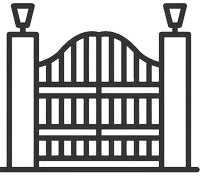How Weather Conditions Impact Fence Longevity and Contractor Choices
When considering a new fence, many overlook how weather conditions affect its longevity. Different climates can greatly impact the materials you choose and how long your fence will last. This guide explores how various weather elements influence fences and why selecting the right contractor matters. By understanding these factors, you can make informed decisions that ensure durability and effectiveness for your fencing project.
The Role of Temperature Fluctuations
Temperature changes significantly impact a fence’s lifespan. In regions where temperatures swing drastically between seasons, materials expand and contract, leading to wear. Wood fences may warp or crack, while metal ones could experience rust from condensation. To counteract these effects, choosing durable materials is crucial. Fencing contractors often recommend treated wood or galvanized steel in areas with such temperature variations.
Humidity and Its Effects
High humidity can cause wood to rot and metal to corrode faster than in drier areas. Moisture absorbed by wood encourages mold growth, weakening the structure over time. For those living in humid climates, opting for materials like vinyl or composite that resist moisture is wise. Consulting Fencing Contractors helps identify suitable options tailored to specific environmental challenges.
Impact of Rainfall and Snow
Rain and snow further stress any fence, especially if water drainage around it is poor. Prolonged exposure to rain leads to material deterioration, while heavy snow can cause structural strain. To mitigate damage, ensure proper drainage systems are in place. Regular inspections after severe weather will also help maintain fence integrity.
Wind Resistance Considerations
Strong winds pose a significant threat to fence stability. In areas prone to storms or high winds, securing posts deeply in the ground is vital. Reinforcing corners and using heavier materials can prevent fences from toppling over. Metal and chain-link fences offer good resistance due to their permeability, allowing wind to pass through rather than against them.
Choosing Appropriate Materials
- Wood: Offers aesthetic appeal but requires treatment to combat moisture and pests.
- Vinyl: Durable and low-maintenance; resists moisture well but may become brittle in extreme cold.
- Metal: Robust and fire-resistant; needs protection from rust in humid or coastal areas.
- Composite: Combines strength and beauty; ideal for various climates but generally pricier.
Contractor Selection Based on Expertise
Hiring experienced fencing professionals ensures your fence withstands local climate conditions. Skilled contractors analyze environmental factors and suggest materials that best suit your location’s specific needs. Furthermore, they provide quality installation services that prevent premature wear caused by improper setup.
Cost Implications of Weather-Resistant Fences
The initial cost of installing a weather-resistant fence might be higher, yet it pays off in reduced maintenance costs and longer lifespan. Investing in quality materials designed to handle local weather saves money over time by minimizing repairs. Discussing budget concerns with knowledgeable fencing experts can highlight cost-effective solutions without sacrificing durability.
Conclusion: Making the Right Choice for Lasting Results
Choosing the right fence involves more than just picking a style. It requires assessing weather conditions and consulting experts who understand how these factors affect fence longevity. Contact us at (281) 914-6488 for professional advice tailored to your needs. Based in Cleveland, TX, we at RJ Maintenance commit to delivering exceptional service that stands up to any climate challenge you face.
